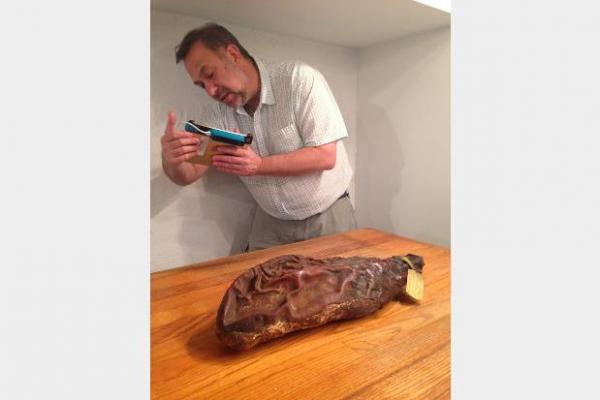
SMITHFIELD, Va., Dec. 14 (UPI) — One anthropologist at the Virginia Commonwealth University is doing the important work of looking deep into and through pieces of really old food.
Recently, VCU professor Bernard Means traveled Isle of Wight County Museum in Smithfield, Virginia, to record a 3-D scan of the world’s oldest ham and peanut.
“How could one resist 3-D scanning the world’s oldest ham and world’s oldest peanut?” Means said in a press release. “I decided that this would be a fun thing to do, especially as we go into the end of the semester.”
The ham belonged to P.D. Gwaltney Jr. and dates to 1902. By 1926, Gwaltney had put a collar around the Smithfield ham and was keeping it in a safe. Gwaltney regularly showed off the ham at county fairs, shows and expose, crediting the preservative powers of his special smoking technique.
Gwaltney’s peanut is even older than his ham, dated to 1890. The Virginian preserved it as proof of his superior crop.
Smithfield is a small town in a region of Virginia known as the peanut belt. The region became famous for its cured country ham in the 18th century. One of the earliest documentations of the product is a receipt for a Smithfield ham delivered from Virginia to the West Indies.
The scans will be used for new displays at the museum and back at VCU.
“The ham and the peanut are clearly important to the people of Isle of Wight County, and Virginia as well, and the lab is pleased to help them tell the story,” Means said. “But, I can also use the ham scan and peanut scan to teach my students at VCU.”
The new records will also serve as important documentation and comparison as the appearance and composition of the food items change over time.
Means says the work is also good advertising for the work of small, local museums and the good work they do in preserving history.
“I am happy the Virtual Curation Laboratory gets to work with small museums and help them get their message out to a global and not just local audience,” Means said.





